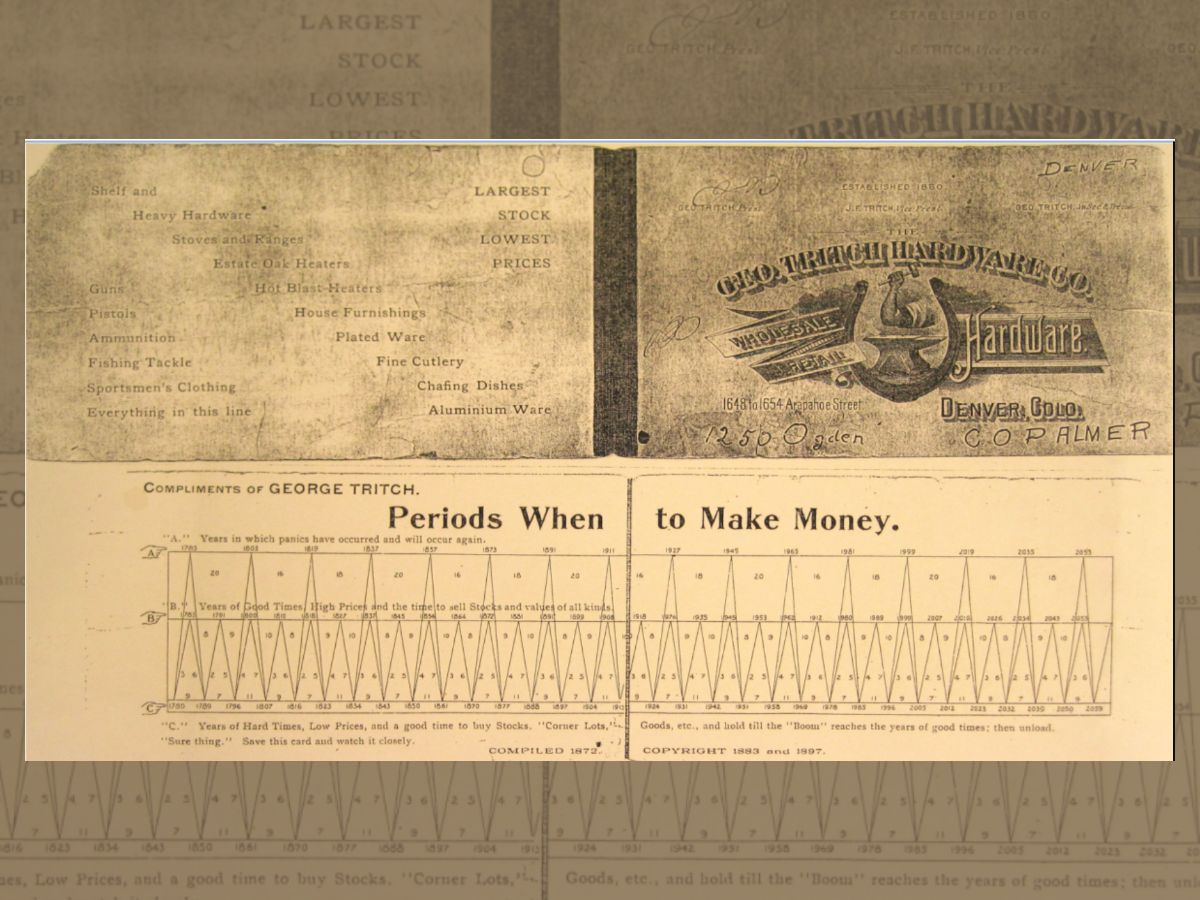The Benner Cycle in 2025: How Accurate Are Its Predictions Today?
Introduction
We have now reached the final quarter of 2025, and it’s the perfect time to take a closer look at The Benner Cycle, the 150-year-old market forecasting model developed by Samuel Benner.
In our previous posts, "The Benner Cycle: A 150-Year-Old Prediction That Continues to Shape Market Insights", we explored its history, mechanics, and visualizations. Today, we’ll examine how the cycle is performing in the current market, what trends it aligns with, and whether it remains relevant for investors today.
The Benner Cycle: A Quick Recap
For readers new to the series: the Benner Cycle is a cyclical market theory predicting periods of prosperity, decline, and panic based on historical patterns. While it cannot predict exact market movements, it provides a long-term perspective on market volatility.
- Prosperity Years: Periods of strong market performance
- Intermediate Years: Moderate growth or minor corrections
- Panic Years: Significant downturns or financial crises
How the Cycle Holds Up in 2025
Looking at the global markets in 2025, we see a mix of patterns that echo the Benner Cycle predictions:
- Stock Market Volatility: Major indexes, including the S&P 500, are experiencing significant fluctuations. This is consistent with the cycle’s “intermediate to panic” phases, as investors respond to macro uncertainty and rate dynamics.
- Interest Rate Shifts: Central banks are making interest‑rate adjustments in response to inflation trends. For example, the European Central Bank projects headline inflation at around 2.3% in 2025, while signaling more accommodative monetary policy. Meanwhile, other central banks are cutting or holding rates more cautiously.
- Sector Rotation: There is a notable rotation in the market: technology (especially AI-driven firms) is under pressure, while more value‑oriented and inflation-hedged sectors like energy are attracting capital.
- Observation: While modern markets are influenced by many more variables than in Samuel Benner’s time (globalization, technology, geopolitical risk), the overall rhythm of cyclical ups and downs still appears relevant, much like what Benner described.
Visualization: 2025 Market vs. Benner Predictions
Suggested Visual:
- A 2020–2030 timeline overlaying predicted “boom,” “intermediate,” and “panic” years with actual market performance in 2025.
- Highlight sectors that are overperforming or underperforming relative to the cycle.
This kind of chart can help readers quickly see how closely current trends follow the Benner Cycle.
Limitations in 2025
Despite some alignment, there are modern challenges to using the Benner Cycle today:
- Globalization & Technology: The rapid flow of information, algorithmic trading, and AI-driven models make markets far more reactive and less predictable than in Benner’s time. Traditional cyclical models struggle to capture these new dynamics. Recent research shows that modern stock‑market forecasting increasingly relies on advanced AI models (like large language models) because traditional predictive models are no longer sufficient. SpringerLink
- External Shocks: Events like pandemics, geopolitical conflict, and climate crises can disrupt historical cycle patterns. For instance, studies on the COVID-19 pandemic show it significantly increased market volatility and introduced shocks that do not neatly fit into older cyclical frameworks. SpringerLink+1
- Geopolitical risks, such as war or trade conflicts, are shown to trigger contagion effects across international markets. SpringerOpen+2JPMorgan Chase+2
- Climate risk is also emerging as a systemic factor: climate-related events affect financial markets in ways traditional cycles don’t fully account for. SpringerOpen
- Precision Issues: The Benner Cycle offers approximate years, not exact dates. Because of this, 2025 may not exactly match Benner’s predicted phase, and applying it too rigidly could lead to misinterpretation.
- Key Tip: Use the Benner Cycle as a complementary tool. Combine it with modern economic analysis, data-driven models, and expert insights to build more resilient strategies.
Takeaways for Investors in 2025
- Stay Diversified: Cyclical patterns suggest volatility, so spread investments across sectors.
- Monitor Trends: Look for early indicators of market stress, especially in historically sensitive sectors.
- Long-Term Perspective: Benner’s model encourages a long-term view, reminding investors that markets experience natural rises and falls.
Final Thoughts
Even in 2025, the Benner Cycle offers valuable historical context for market trends. While it is not a crystal ball, it provides a lens through which to anticipate periods of growth and caution. Investors and market enthusiasts can use this insight to make more informed decisions, combining history, modern analytics, and careful strategy.
Do you think the Benner Cycle predictions for 2025 align with what you see in today’s market? Or has modern finance evolved beyond these historical patterns? Share your thoughts in the comments below!
You may like
Read more:



